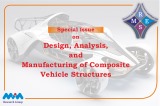Research Article
Mechanical and durability characterization of hybrid fibre reinforced green geopolymer concrete
Kadarkarai Arunkumar1, Muthiah Muthukannan1, Arunachalam Sureshkumar1, Arunasankar Chithambarganesh2, Rangaswamy Kanniga Devi R3
1Department of Civil Engineering, Kalasalingam Academy of Research and Education, India
2Department of Civil Engineering, Sree Vidya Nikethan Engineering College, Tirupati, India
3Department of Computer Science and Engineering, Kalasalingam Academy of Research and Education, India
Keywords
Abstract
Green Geopolymer Concrete;
Wood Waste Ash;
Water Absorption;
Electrical Resistivity;
Waste Utilization
Finding a suitable waste utilization approach to produce a cleaner environment is the most crucial aspect globally. Geopolymer is the most promising alternate for cement and source for major waste utilization. Disposal of waste rubber tires is a challenging task for the cleaner environment. Hence, abundant wastes, which create environmental pollution, such as wood waste ash and waste rubber, are used to invent the green geopolymer concrete in this research. The geopolymer is uncomfortable with carrying impact energy, ductility, and energy absorption. Fibre addition could enhance the above properties. Waste wood ash is replaced by 30 percent with fly ash. This research assesses the individual effect of adding polypropylene and rubber fibre by 0, 0.5%, 1%, 1.5%, and 2% of volume fractions. In addition, the effects of fibre hybridization on the mechanical and durability characteristics of green geopolymer concrete have also been analyzed. The study finds the maximum performance in mechanical and durability behaviors with the mix having 0.5% PP and 0.5% rubber. The microstructure characteristics are also assessed using SEM for understanding the phase development in green geopolymer concrete. The research hypothesis proves that an intellectual approach is made to utilize the waste materials such as rubber and waste wood ash in the invention of green geopolymer concrete, which can help to eliminate the environmental impact and can act as a sustainable concrete.
© 2021 MIM Research Group. All rights reserved.

